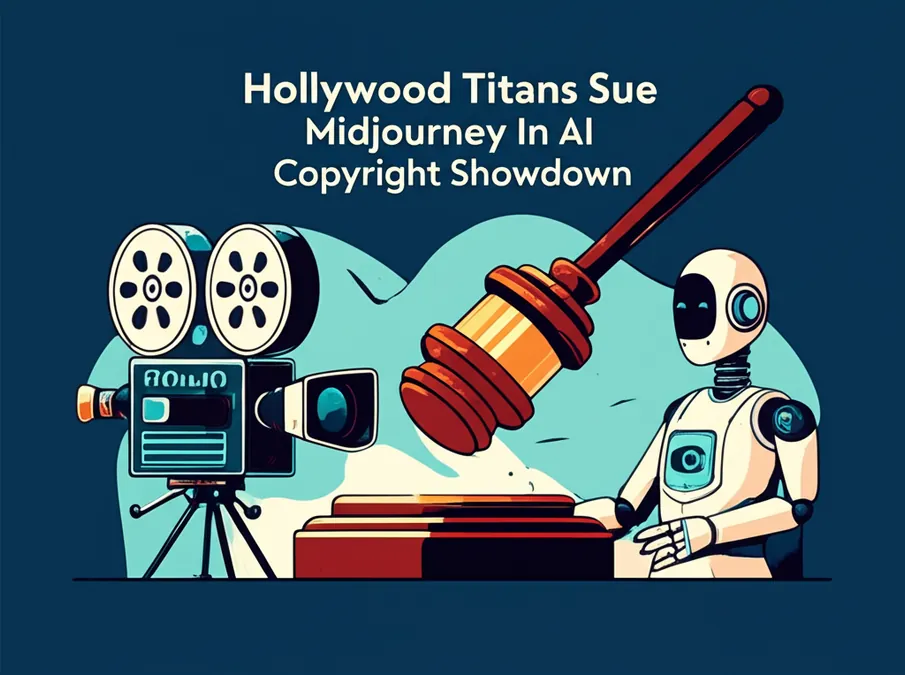Developer Offer
Try ImaginePro API with 50 Free Credits
Build and ship AI-powered visuals with Midjourney, Flux, and more — free credits refresh every month.
AI vs AI The Escalating War Against Deepfake Technology
The phone rings. You're told it’s the secretary of state calling. But in today's world, can you be sure?
For high-level officials and everyday citizens alike, the line between reality and digital fabrication is blurring. Thanks to rapid advances in artificial intelligence, creating convincing deepfakes is no longer a complex task reserved for experts. This growing accessibility poses significant security threats to governments, corporations, and individuals, making digital trust one of the most precious commodities of our time.
The challenge is immense, but so is the resolve to combat it. The solution will require a combination of new laws, enhanced digital literacy, and, perhaps most importantly, fighting AI with even more sophisticated AI.
"As humans, we are remarkably susceptible to deception," notes Vijay Balasubramaniyan, CEO of tech firm Pindrop Security. Yet, he remains optimistic about the solutions on the horizon, stating, "We are going to fight back."
Deepfakes as a National Security Threat
The national security implications of deepfakes are stark. Recently, a deepfake of Secretary of State Marco Rubio was used in an attempt to contact foreign ministers and other officials. This followed an incident where someone impersonated Trump’s chief of staff, Susie Wiles. Such deceptions could lead to the leaking of sensitive diplomatic or military information.
Kinny Chan, CEO of the cybersecurity firm QiD, explains the motivation: “You’re either trying to extract sensitive secrets or competitive information or you’re going after access, to an email server or other sensitive network.”
Synthetic media can also be used to influence public behavior. In a notable case, a robocall featuring an AI-generated voice of Joe Biden incorrectly urged Democrats not to vote in a primary. The political consultant behind it, who was later acquitted of voter suppression, claimed he did it to highlight the dangers. “I did what I did for $500,” said Steven Kramer. “Can you imagine what would happen if the Chinese government decided to do this?”
This highlights how easily deepfakes can become a potent weapon for foreign adversaries like Russia and China, which have histories of using disinformation to undermine democratic institutions.
Corporate Espionage and Financial Fraud Get an AI Upgrade
The threat extends deep into the corporate world, where deepfakes are increasingly used for espionage and fraud.
“The financial industry is right in the crosshairs,” says Jennifer Ewbank, a former CIA deputy director. “Even individuals who know each other have been convinced to transfer vast sums of money.”
Scammers can impersonate CEOs to trick employees into revealing passwords or transferring funds. Another alarming trend involves using deepfakes to cheat the hiring process. Some criminals apply for jobs with fake identities to gain access to sensitive company networks, steal secrets, or install ransomware. U.S. authorities have reported that thousands of North Korean IT workers use this method to secure jobs at Western firms, generating billions for the North Korean regime.
According to research from Adaptive Security, as many as one in four job applications could be fake within three years. “We’ve entered an era where anyone with a laptop and access to an open-source model can convincingly impersonate a real person,” states Brian Long, Adaptive's CEO. “It’s no longer about hacking systems — it’s about hacking trust.”
Fighting Fire with Fire Using AI to Combat AI
Addressing the multifaceted challenge of deepfakes requires a robust, multi-pronged strategy. New regulations may soon compel tech platforms to better identify and label AI-generated content. At the same time, greater investment in digital literacy programs can help people spot deception more effectively.
However, the most powerful tool for detecting AI might just be another AI. Advanced detection systems are being trained to spot the minuscule flaws in deepfakes that are imperceptible to the human eye or ear.
Companies like Pindrop are developing systems that analyze millions of data points in a person's speech to identify irregularities in real-time, flagging the use of voice-cloning software during video calls or interviews.
Balasubramaniyan believes these tools will become commonplace, much like spam filters that tamed the once-overwhelming flood of junk email. “You can take the defeatist view and say we’re going to be subservient to disinformation,” he said. “But that’s not going to happen.”
Compare Plans & Pricing
Find the plan that matches your workload and unlock full access to ImaginePro.
| Plan | Price | Highlights |
|---|---|---|
| Standard | $8 / month |
|
| Premium | $20 / month |
|
Need custom terms? Talk to us to tailor credits, rate limits, or deployment options.
View All Pricing Details

